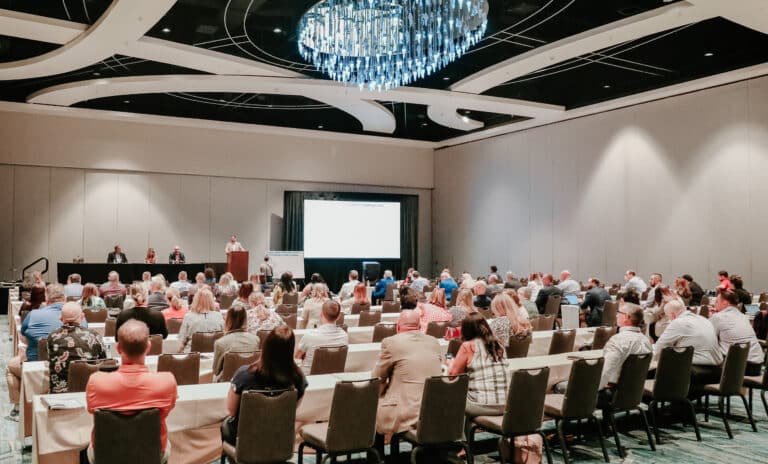The COVID-19 pandemic forced the world to adapt to a new normal, albeit a temporary one, driven by social and health-based regulations. This, of course, impacted businesses worldwide and created a number of new challenges, from day-to-day operations to communicating with clients to recruiting and retaining talent. These obstacles accelerated how businesses utilize the virtual business environment.
Joe Berrios, Managing Director, Carrier Practice, sat down with Dawn Griffin, SVP – Carrier Practice Claims, to discuss how businesses are working to meet the demands of the new “business as usual.”
Joe Berrios (JB): Dawn, what changes have you seen in the insurance industry’s operations within a predominantly virtual environment?
Dawn Griffin (DG): For starters, the overall pace of the industry has accelerated. Whether it be sending emails or compiling years of data history, digital accessibility allows us to work and collaborate in real time. Employees who work remotely no longer need to wake up early to get ready and drive to the office; they can simply walk down the hall and be logged on within minutes. Even for in-person or hybrid employees, essential materials and technology are readily available. Consequently, physical location no longer matters as much as it did before.
Because of this, the industry standard has naturally developed to prioritize and expect prompt responsiveness. We can accomplish so much more in a digital world, but with that comes the pressure to keep up with the pace. Technological and data capabilities are developing and improving faster than ever, deadlines are shortening, and above all, clients still expect great results.
JB: What are the tangible differences in a virtual work environment?
DG: The shift from a physical workspace to a virtual one has dramatically changed how an organization’s internal operations function. The tools and technology that we used to rely on, such as printers and basic office supplies, now must be provided by the individual contributor or have become obsolete. We have had to set new standard procedures for protecting data and client-related information—how we send and receive it, how we store it, and how we delete it, if necessary. Additionally, we now must gauge the marketplace and its trajectory using mostly digital communications. In this context, it has become more critical than ever to cultivate relationships, engage with clients, and foster collaboration within our teams.
JB: On the topic of building relationships, consistent and clear communication is especially important in a virtual work environment. How have communication styles between team members—and, more importantly, with clients—changed? And what are the challenges associated with these changes?
DG: Email is the law of the land. Historically, internal operations were managed through mail. Client documents, time-sensitive matters, notices of lawsuits, and other communications were sent to a centralized address for processing. However, email eliminates that central internal control system. Client interactions and requests are now individualized and occur in real time. As I mentioned earlier, communications are sent within seconds instead of the days it would take to deliver a stamped and sealed envelope. This poses a challenge to maintaining quality and consistent service in such a fast-paced environment.
Another challenge lies in conveying meaning through virtual communications. We’ve all had the experience of reading an email in a way that the sender did not intend. We are much better at understanding someone’s meaning when we can hear their tone of voice, see their face, read their body language, and be fully present. Each business, department, team, and individual has its own way of communicating and understanding messages, and attempting to scale all these variations in a single email can be a monumental task. We only see this increasing as the next generation of talent enters the industry. Generational differences in language, colloquialisms, and punctuation usage add an additional layer to connecting with teammates, colleagues, and clients.
Email is an integral and expected part of our workflow. But we still need to navigate this medium with intention and care.
JB: You mentioned the next generation of talent. How has the virtual landscape altered how organizations attract and retain talent?
DG: The virtual landscape has eliminated location-based restrictions when searching for talent. Employers can broaden their searches for prospective employees nationwide, or even globally. We have the technology to support team members who live and work where they choose. This flexibility can be a draw for potential new hires.
Today, the primary focus in selecting talent is the caliber of expertise. While time zones may impact work hours and capabilities, an employee’s skill set is more valuable than their location. With the ever-increasing speed and demand of the industry, organizations need to equip themselves with the best talent—individuals who want to grow professionally and contribute to the success of a business. To attract and retain such talent, organizations need to create supportive environments that empower workers to excel. Motivated and connected team members stay where they are valued.
JB: How can building strategic partnerships to manage this evolving risk help businesses stay ahead of the curve and adapt to changes in the marketplace?
DG: So much of our business exists solely in a digital space. High-speed accessibility has become the standard for conducting business. Companies that can demonstrate their ability to deliver will stay ahead. Conferences are a great way to develop and nurture client relationships. They allow partners and their clients to meet in person, and after a few years of limited events, they are back in full swing. Client communications will still primarily occur through email or phone, but meeting face-to-face could be the difference in securing or maintaining a client relationship. Internally, businesses need to prioritize their employees’ needs and capabilities and ensure that they feel supported in such a demanding environment.
Organizations also need to be strategic about marketing themselves and what they can offer clients. Innovation and analytics are shaping the future of the industry, so developing new features and then communicating how they change with the times has become the standard of elevated service. The industry is advancing faster than ever, and the best partners are those who not only keep up but also push the boundaries and decide when the line moves.
Connect with our team to find out how we equip our clients to adapt to the industry’s virtual environment.






